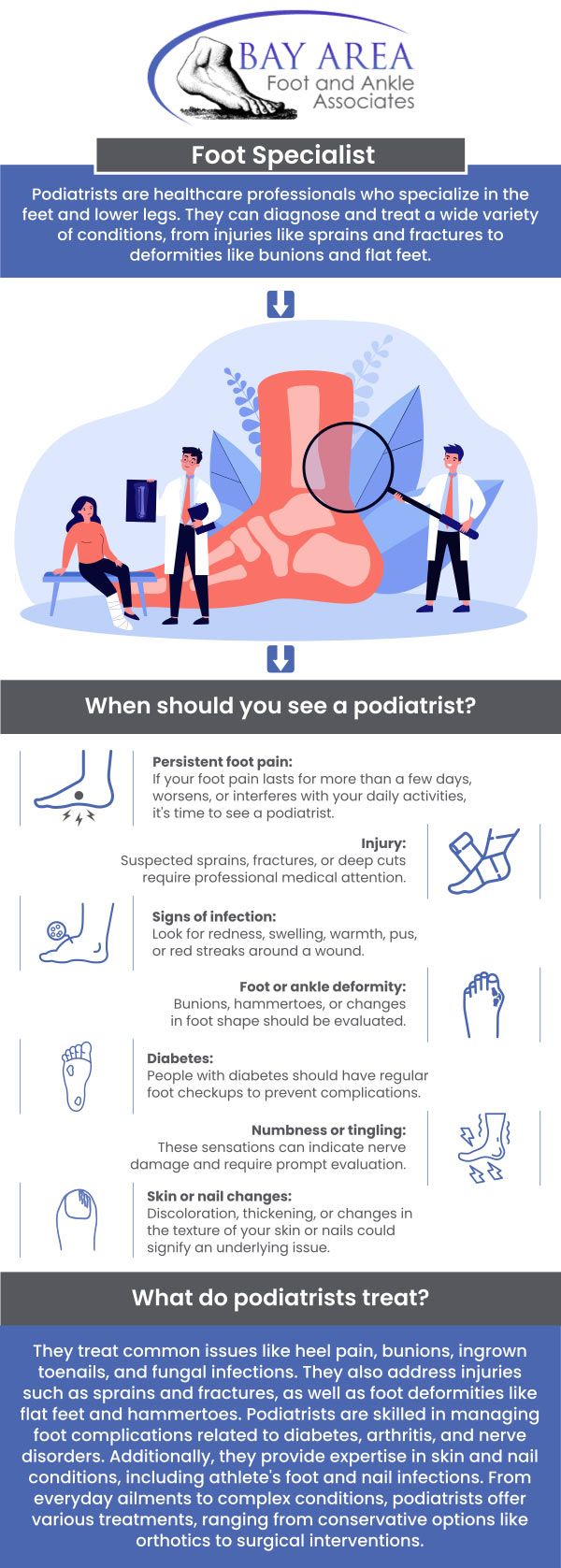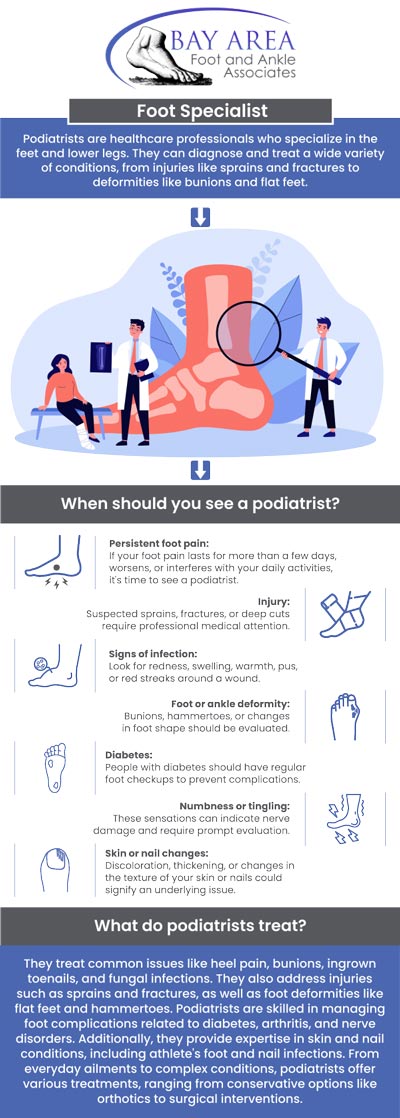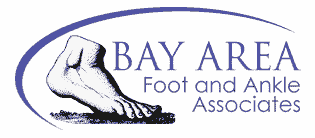Foot and Toe Fractures Specialist Q&A
Foot or toe fractures often result from trauma like stubbing your toe, dropping something heavy, or high-impact activities. Symptoms include pain, swelling, bruising, difficulty walking, and sometimes a deformed toe. Treatment generally involves rest, ice, compression, and elevation to reduce swelling, and a healthcare provider will evaluate the fracture to determine the best healing approach. At Bay Area Foot and Ankle Associates, Dr. John W. Scivally, DPM, and Dr. Robin K. Lie, DPM treat foot and toe fractures to help you get back on track as soon as possible. For more information, contact us or book an appointment online. We have convenient locations to serve you in Walnut Creek, CA and Brentwood, CA.




Table of Contents:
What is a Fracture?
What are the Treatment Options for a Foot or Toe Fracture?
What are the Different Types of Foot Fractures?
What are the Signs and Symptoms of a Traumatic Fracture?
In general, a fracture is a break or crack in the bone. Sometimes the broken bone may puncture the skin, which is known as an open fracture. Fractures usually occur from a fall, accident, or sports or exercise related injury. Some fractures may cause immediate and intense pain, while others may not be as immediately obvious, which is why it is important to seek care from a medical professional.
Treatment depends on the type/severity of the fracture. In some cases, a period of rest is all that is needed, in which you abstain from rigorous physical exercise or avoid putting weight on your foot and toes. For example, if the fracture was caused by running, you may need to avoid running until the fracture heals completely.
Your specialist may give you a device to immobilize your foot or toe, such as a stiff shoe or boot, or a splint. Physical therapy or specific exercises may be recommended after the fracture is healed to regain strength and prevent reinjury. In some cases, surgery may be necessary to fully heal the fracture.
Even in cases where the fracture is not as painful, it is important to seek the care of a medical professional to ensure the injury doesn’t become more serious or cause problems later on. There is a common misconception that foot or toe fractures don’t require a doctor’s visit, but this is not true. The physicians at Bay Area Foot and Ankle Associates can provide an assessment to determine the best way to address and care for your fracture and ensure your regular activities are not further disrupted.
The bone structure of the foot and ankle is complex, and there can be various types of fractures in the area. An ankle joint fracture can be serious and usually requires a cast, and in some cases surgery, if the bones are too misaligned. A metatarsal fracture is a fracture of the bones in the forefoot and is usually treated using a stiff-soled shoe or boot rather than a cast. A sesamoid bone fracture is a fracture of the two small, round bones at the base of the big toe. This type of fracture may be difficult to heal and, in some cases the sesamoid bone may have to be removed. Finally, there are toe fractures, which are common and can usually heal with “buddy” taping the injured toe and a stiff soled shoe. Although fractures can vary in type and intensity, it is important to have it assessed to avoid problems down the road. A physical exam, X-ray, MRI or CT scan may be required to determine the best course of action.
A traumatic fracture will be very painful, and come with bruising and swelling at the site of injury. There will be difficulty or inability to bear any weight on the injured extremity. The injury site or foot may look deformed and be very tender. These fractures require immediate medical attention to optimize healing and avoid long term complications.
It is highly recommended that you see a physician for any concerns with a toe or foot fracture. While some minor fractures may only require rest, it is important to rule out that nothing more serious is going on, and that the bones aren’t healing incorrectly and become misshapen or deformed resulting in chronic pain. For more information, contact us or book an appointment. We look forward to serving you! We serve patients from Walnut Creek CA, Brentwood CA, Concord CA, Pleasant Hill CA, Pittsburg CA, Antioch CA, Alamo CA, Danville CA, and Oakley CA.

Additional Services You May Need
▸Custom Foot Orthotics
▸Ingrown Toenail Specialist
▸Traditional Podiatry Care
▸Foot and Ankle Surgery Clinic
▸Bunion Doctor
▸Corns and Calluses
▸Foot Arthritis and Joint
▸Warts
▸Video Gait Analysis
▸Athletic Taping
▸Pediatric Foot Specialist
▸Gait Abnormalities
▸Foot Dermatologist
▸Foot Deformities
▸Chronic Foot Injury
▸Diabetic Foot Specialist
▸Acute Foot Injuries
▸Podiatric Sports Services
▸Plantar Fasciitis Specialists


